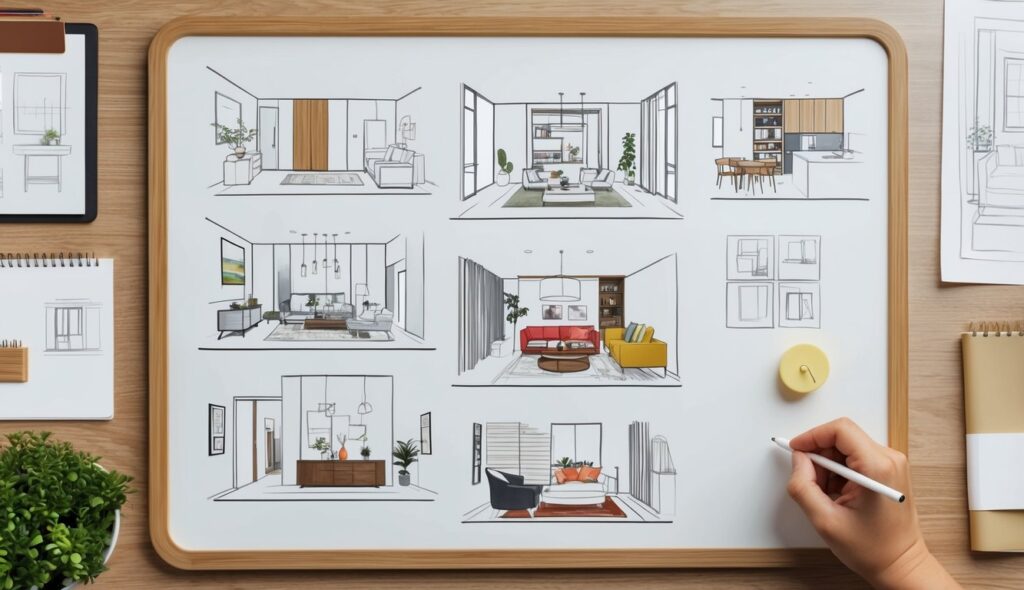In the realm of architecture, blind installations have evolved to seamlessly integrate function and aesthetics.
Remember to repin your favorite images!
Understanding how iconic buildings incorporate blind installations offers valuable lessons in design principles and practical applications.
In these case studies, the focus will be on innovative approaches that prioritize sensory experiences beyond vision.
For instance, some architects have skillfully employed textures and spatial arrangement to guide users through a building without relying on sight.
Techniques such as tactile paving and strategic soundscapes demonstrate a profound respect for inclusivity.
Examining how a house for a blind inhabitant was designed showcases the practical application of these concepts.
These successful blind installations serve as exemplary models for the industry.
Architects can draw inspiration from the nuanced methods applied in these structures, leading to more inclusive and multisensory environments.
By studying these iconic buildings, professionals can enhance their designs to accommodate all users.
Fundamentals of Blind Installation in Architecture
Blind installations in architecture require careful consideration of materials, design, and the unique challenges involved. This ensures both functionality and aesthetic integration in iconic buildings.
Materials and Systems
Choosing the right materials is crucial for blind installations.
Glass, steel, and concrete are common choices due to their durability and versatility.
Architects and engineers prefer these materials to achieve both aesthetic appeal and functional efficiency in their designs.
Modern blind systems include zebra blinds, cordless window shades, and roller shades.
These systems balance natural light, privacy, and energy efficiency.
For instance, Keego Zebra Blinds offer adjustable light control with their dual-layer design, blending sheer mesh and opaque slats seamlessly.
Design and Functionality
Designing with blinds in mind enhances both aesthetic and practical functions.
The design must ensure optimal natural light while minimizing glare.
Facades and windows are often the focus, where integrating blinds can also complement the building’s style and architectural intent.
Effective blind design requires collaboration between architects and engineers.
By understanding how blinds affect natural light and airflow, designers can create environments that improve comfort and productivity.
Focusing on functionality, blinds can support various needs, from residential privacy to adapting workplace lighting conditions.
Challenges and Innovation
Innovating in blind installation tackles many challenges such as scale, complexity, and environmental sustainability.
Implementing blinds in large-scale projects requires efficiency and precision.
Custom solutions might be needed for different building facades, considering the angle of light and climate impact.
Architects work to blend traditional architecture with modern blind technologies.
Historical buildings especially can benefit, respecting their essence while integrating new systems.
Resources like historical architecture articles guide architects in preserving heritage without compromising modern comfort.
Incorporating blinds isn’t merely an add-on; it’s a holistic design element.
This integration can improve the building’s energy efficiency and environmental footprint, showcasing the role of blinds in sustainable architecture.
Iconic Cases of Successful Blind Installations
Case studies reveal how intricate design principles and innovative approaches create iconic buildings with successful blind installations.
Different structures, from airports to cultural landmarks and skyscrapers, display the synergy between functionality and aesthetics.
Airport Mega Structures
Airport mega structures often demand high levels of efficiency, safety, and sustainability.
For instance, the installation of blinds in glass walls at major airports, such as Singapore Changi Airport, not only reduces glare but also enhances the passenger experience.
The choice of materials—often steel and glass—requires careful consideration of textures and colors to fit the modern, sleek look while ensuring durability.
Innovative contractors frequently employ technologies that allow automated blind adjustments based on sunlight intensity.
This not only optimizes energy usage but also maintains indoor comfort levels.
By ensuring blinds fit seamlessly with the design, architects achieve a balance between function and form, making these spaces both practical and inviting.
Cultural Landmarks and Heritage Buildings
At cultural landmarks and heritage buildings like the Louvre Museum, renovations often involve meticulous planning.
Architects strive to preserve the site’s historical and cultural significance while introducing modern conveniences.
Blind installations in these contexts need to respect the building’s original identity and aesthetics, incorporating muted colors and traditional textures.
In some cases, reinforced concrete structures like those designed by Le Corbusier are retrofitted with customized blinds.
These installations help control natural light without compromising the architectural integrity.
Sustainability is also a key consideration, as blinds aid in reducing energy consumption, ensuring these heritage sites remain environmentally responsible.
Contemporary Skyscrapers
In contemporary skyscrapers such as the Burj Khalifa, blinds serve not just a functional purpose but also contribute to the building’s overall design narrative.
Architects here often use advanced Building Information Modeling (BIM) to coordinate blind installations. This ensures they integrate with the complex interior layouts and glass facades.
Vertical gardens within these high-rise structures benefit from strategically placed blinds that regulate sunlight and temperature.
This integration supports sustainability efforts by promoting natural cooling mechanisms and reducing reliance on artificial climate control.
In both commercial and residential skyscrapers, the use of state-of-the-art blind systems epitomizes cutting-edge architectural innovation.

